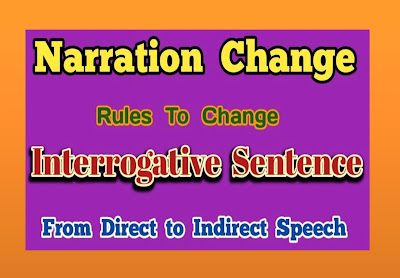Lesson Plan of Three Common Clusters in Initial Position English Grade IV
Lesson Plan of Three Common Clusters in Initial Position
English Grade IV
Students’ Learning Outcomes
·
Pronounce with reasonable
accuracy common three consonant clusters in initial positions.
Information for Teachers
·
Five vowels of English
Language are a, e, I, o, and u.
·
All the letters of English
Language besides vowels are called consonants.
·
When two or three consonants
are combined they make consonant cluster. Cluster means group, bunch or
collection.
·
If two consonants without a
vowel in between come together they form a consonant cluster. For example spot,
stop where ’sp’ and ‘st’ are consonant clusters without having a vowel coming
between them, while letter ’t’ and ‘p’ are consonants and ‘o’ is a vowel.
·
The sounds made by clusters
remain separate for each letter, unlike digraph and trigraphs which make one
sound.
·
It is important to
distinguish clusters and digraphs.
·
Clusters are made of two or
more consonant sounds, while a digraph is a group of two consonant letters
standing for a single sound. For example, in the word ship, the two letters of
the digraph (sh) together represent the single consonant.
Material / Resources
Chalk, board, straw, string, strip, picture of
a street, strawberry, flashcards of the same made by the teacher
Worm up activity
·
Divide the students into
groups of five.
·
Ask them to write three
letter words.
(Consonant- vowel-consonant
e.g. bag, set). Give them two minutes for this activity.
·
Take at least five words from
the students and write them on the board.
·
Play the game.
Step 1: Play with volume,
‘How loud can you say it?’ Ask the students to read out the words written on
the board in a low volume, increasing the volume as the words increase. (Be
careful of the classes next door. Sound should not be so loud to disturb
others)
Step 2: Experiment with
speed. ‘How fast can you say it?’ The students say words fast building up speed
like a train as the words increase.
Development
Activity 1
·
Hold a piece of string in
your hand and ask the students: what is it?
·
Show a straw and get students
to say which word It is, writing their responses on the board.
·
Read one of the words twice.
‘What is similar in it? (three consonant letters ‘str’,)
·
Divide the class in small
groups of three to four members.
·
Ask the groups to discuss for
three minutes and write 3 or 4 words starting with ‘str’.
·
Give them hints for example,
a small red colored fruit (strawberry) something that is very different or
unusual (strange), the part of a shoe that has a buckle on it (strap).
·
Let group share ideas with
other groups one by one.
·
Write all the responses on
the board.
·
Ask the students to practice
the sounds by chanting/ reading aloud using the list of words written on the
board.
·
Tell the students that the
sounds together make a consonant cluster. (see ‘information for teachers’)
Activity 2
·
Show a strip of page, an
elastic strap (string), strawberry and street picture cards to the students.
Ask the students to identify the object shown to them.
·
Write the answers on the
board.
·
Point to the words one by one
and ask the students (one by one) to read them aloud.
·
Ask the students to copy the
words in their notebooks.
·
The students, who finish the
written work, must practice reading the words again.
Sum up / Conclusion
·
Ask a few students (one by
one) to come forward and read out the words aloud, loudly and clearly.
·
Ask the students:
Ø What are consonant clusters? Give a few
examples.
Ø Give an example of a consonant cluster in
initial position.
Ø Give an example of a consonant cluster and
consonant letter.
·
Find the exercise related to
the topic in the textbook. The students must do this exercise in the notebook
or textbook.
Assessment
·
Assess the students through
their responses in the class during the lesson by checking their pronunciation.
·
Sample assessment questions:
Ø Define consonant clusters and also give three
examples.
Ø Differentiate between a consonant cluster and
consonant letter by giving five examples each.
Ø Read the following words and write the consonant
cluster. Also mention if the consonant cluster is in the initial or final
position of the word.
1.
Strawberry
2.
Hand
3.
Street
4.
Gift
5.
Lift
6.
Flat
7.
Group
8.
Band
9.
Bends
10.
Ponds
·
Answer key:
Ø Strawberry: ‘str’ consonant cluster in the
initial position.
Ø Hand: ‘nd’ consonant cluster in the final
position.
Ø Street: ‘str’ consonant cluster in the initial
position.
Ø Gift: ‘ft’ consonant cluster in the final
position.
Ø Lift: ‘ft’ consonant cluster in the final
position.
Ø Flat: ‘ft’ consonant cluster in the initial
position.
Ø Group: ‘gr’ consonant cluster in the initial
position.
Ø Band: ‘nd’ consonant cluster in the final
position.
Ø Bends: ‘nds’ consonant cluster in the final
position.
Ø Ponds: ‘nds’ consonant cluster in the final
position.
Follow up
·
Ask the students to look into
a dictionary and find four new words starting with ‘str’ consonant cluster.
·
The words listed have been
selected because of their suitability for the children between 4 to 8 years
age.
(straight, strain, strainer,
strand, strange, stranger, strap, strategy, straw, strawberry, stray, streak,
stream, street, strength, stress, stretch, stretcher, strict, stride, strike,
striker, string, strip, stripe, strive, strode, stroke, stroll, strong, struck,
struggle.)
·
Ask the students to use some
of the above given words in sentences of their own.








Thanks I enjoyed your teaching
ReplyDeleteThanks for the lesson, I enjoyed it awesomely!
ReplyDelete